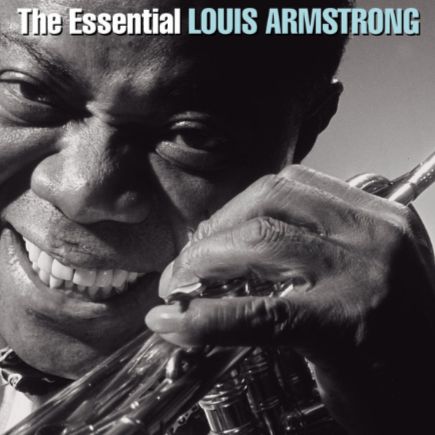I Can’t Give You Anything But Love: une déclaration tendre aux origines du jazz vocal
Composée en 1928 par Jimmy McHugh, sur des paroles de Dorothy Fields, I Can’t Give You Anything But Love voit le jour dans la comédie musicale Blackbirds of 1928, un spectacle novateur qui mettait en lumière des artistes afro-américains sur la scène de Broadway — un événement culturel majeur à l’époque.
Selon la légende, l’inspiration du morceau serait née d’une scène saisie sur la Cinquième Avenue : un jeune homme, observant les vitrines de Tiffany avec sa compagne, aurait murmuré : « Chérie, j’aimerais t’offrir un bijou comme ça, mais pour l’instant, je ne peux t’offrir que de l’amour… ».
Avec sa mélodie souple, son harmonie simple et son message universel, la chanson s’impose rapidement comme un standard, tant dans la sphère populaire que dans l’univers du jazz naissant. Sa tendresse sans mièvrerie, son accessibilité mélodique et la sincérité de son propos en font un support idéal pour l’improvisation.
I Can’t Give You Anything But Love marque un tournant dans la scène musicale new-yorkaise de la fin des années 1920 : elle témoigne à la fois de l’émergence du jazz comme langage populaire, et de l’intégration progressive des artistes afro-américains dans les espaces culturels dominants.
Louis Armstrong: le swing d’une déclaration universelle
Enregistrée à New York le 5 mars 1929 par Louis Armstrong and His Orchestra, I Can’t Give You Anything But Love figure parmi les premières grandes réussites vocales du trompettiste, à un moment où sa carrière prend un tournant décisif. La chanson de 1928 connaît un succès immédiat dans les cabarets et sur Broadway, mais c’est Armstrong qui en propose l’une des interprétations les plus marquantes, contribuant à en faire un standard du jazz.
Dans cette version, Armstrong ne se contente pas d’un simple rôle d’instrumentiste : il s’impose également comme chanteur à part entière. Son interprétation vocale, chaleureuse et faussement nonchalante, donne à entendre une nouvelle forme de musicalité, fondée sur le phrasé personnel, le swing rythmique, et un sens inné de la mise en valeur des paroles. Sa voix rauque, déjà emblématique, transforme cette ballade légère en une déclaration sincère et pleine de tendresse, où la simplicité du message devient une force expressive.
Musicalement, l’enregistrement se distingue par un équilibre subtil entre sophistication orchestrale et spontanéité. Le jeu de trompette d’Armstrong, lumineux et chantant, dialogue avec les sections de cuivres dans une atmosphère détendue mais parfaitement maîtrisée. Les petites inflexions, les respirations, les retards rythmiques — tout contribue à créer un sentiment de liberté contrôlée, signature de l’esthétique naissante du swing.
I Can’t Give You Anything But Love: una dichiarazione tenera alle origini del jazz vocale
Composta nel 1928 da Jimmy McHugh, con testo di Dorothy Fields, I Can’t Give You Anything But Love nacque all’interno della commedia musicale Blackbirds of 1928, uno spettacolo innovativo che portò per la prima volta artisti afroamericani sui palcoscenici di Broadway — un evento culturale di grande portata per l’epoca.
Secondo la leggenda, l’ispirazione sarebbe nata una sera sulla Quinta Avenue: una giovane coppia ammirava le vetrine di Tiffany quando l’uomo sussurrò alla sua compagna: “Tesoro, mi piacerebbe poterti regalare un gioiello così, ma per ora posso offrirti solo amore”.
Con la sua melodia fluida, l’armonia semplice e un messaggio universale, la canzone si impose rapidamente come uno standard, tanto nel repertorio popolare quanto nel nascente universo del jazz. La sua tenerezza priva di sentimentalismi, la linearità melodica e l’onestà del testo la resero un terreno ideale per l’improvvisazione.
I Can’t Give You Anything But Love segnò una svolta nella scena musicale newyorkese della fine degli anni Venti: riflette l’emergere del jazz come linguaggio popolare e l’integrazione progressiva degli artisti afroamericani negli spazi culturali dominanti.
Louis Armstrong: lo swing di una dichiarazione universale
Incisa a New York il 5 marzo 1929 da Louis Armstrong and His Orchestra, I Can’t Give You Anything But Love rappresenta uno dei primi grandi successi vocali del trombettista, in un momento cruciale della sua carriera. La canzone, composta l’anno precedente, aveva già conosciuto un immediato trionfo nei cabaret e a Broadway, ma fu Armstrong a offrirne una delle interpretazioni più memorabili, contribuendo in modo decisivo alla sua consacrazione come standard del jazz.
In questa versione, Armstrong non si limita al ruolo di strumentista: si afferma anche come cantante a pieno titolo. La sua interpretazione vocale, calda e apparentemente disinvolta, rivela una nuova musicalità fondata sul fraseggio personale, sullo swing ritmico e su una naturale sensibilità per il testo. La voce roca, già inconfondibile, trasforma questa leggera ballata in una dichiarazione sincera e affettuosa, in cui la semplicità del messaggio diventa la sua più grande forza espressiva.
Dal punto di vista musicale, la registrazione si distingue per il sottile equilibrio tra raffinatezza orchestrale e spontaneità. La tromba di Armstrong, luminosa e melodica, dialoga con le sezioni dei fiati in un’atmosfera rilassata ma perfettamente controllata. Le inflessioni, le pause, i lievi ritardi ritmici: ogni dettaglio contribuisce a creare una sensazione di libertà misurata, cifra distintiva della nascente estetica dello swing.
I Can’t Give You Anything But Love: una tenera dichiarazione alle origini del jazz vocale
Composta nel 1928 da Jimmy McHugh, con testo di Dorothy Fields, I Can’t Give You Anything But Love nasce nel musical Blackbirds of 1928, uno spettacolo innovativo che diede spazio ad artisti afroamericani sul palcoscenico di Broadway — un evento culturalmente significativo per l’epoca.
Secondo la leggenda, l’ispirazione nacque una sera sulla Quinta Strada: una giovane coppia osservava le vetrine di Tiffany quando l’uomo avrebbe sussurrato alla sua compagna: «Tesoro, vorrei poterti regalare un gioiello così, ma per ora non posso offrirti altro che amore».
Con la sua melodia morbida, l’armonia semplice e un messaggio universale, la canzone si impose rapidamente come standard, tanto nel mondo della musica popolare quanto nell’universo nascente del jazz. La sua tenerezza sincera, priva di sentimentalismi, la sua accessibilità e la forza del suo contenuto la resero terreno ideale per l’improvvisazione.
I Can’t Give You Anything But Love segnò una svolta nella scena musicale newyorkese della fine degli anni Venti: testimoniò l’ascesa del jazz come linguaggio popolare e l’integrazione crescente degli artisti afroamericani negli spazi culturali ufficiali.
Louis Armstrong: lo swing di una dichiarazione universale
Registrata a New York il 5 marzo 1929 da Louis Armstrong and His Orchestra, I Can’t Give You Anything But Love è una delle prime grandi affermazioni vocali del trombettista, in un momento decisivo della sua carriera. Il brano, composto nel 1928, aveva subito riscosso successo nei cabaret e a Broadway, ma è Armstrong a proporne una delle versioni più significative, contribuendo a farne un vero standard del jazz.
In questa versione, Armstrong non si limita al ruolo di strumentista: si impone anche come cantante a tutto tondo. La sua interpretazione vocale, calda e solo in apparenza disinvolta, rivela una nuova musicalità, fondata sul fraseggio personale, sul ritmo swing e su un innato senso della valorizzazione del testo. La sua voce roca, già inconfondibile, trasforma questa leggera ballata in una dichiarazione sincera e tenera, in cui la semplicità del messaggio diventa una forza espressiva.
Dal punto di vista musicale, la registrazione si distingue per un sottile equilibrio tra raffinatezza orchestrale e spontaneità. La tromba di Armstrong, brillante e cantabile, dialoga con le sezioni di fiati in un’atmosfera rilassata ma perfettamente controllata. Le inflessioni, le pause, i leggeri ritardi ritmici: tutto contribuisce a creare una sensazione di libertà controllata, marchio della nascente estetica swing.
I Can’t Give You Anything But Love: a tender declaration at the roots of vocal jazz
Composed in 1928 by Jimmy McHugh with lyrics by Dorothy Fields, I Can’t Give You Anything But Love emerged from the musical Blackbirds of 1928, a groundbreaking Broadway show that placed African American performers at the center of the stage — a culturally significant event for its time.
According to legend, the song’s inspiration came one night on Fifth Avenue, when a young couple was admiring the Tiffany window displays. The man reportedly said, “Darling, I wish I could buy you a jewel like that, but for now, I can’t give you anything but love.”
With its smooth melody, simple harmony, and universal message, the song quickly became a standard — both in the popular repertoire and within the growing world of jazz. Its honest tenderness, melodic accessibility, and emotional clarity made it a perfect vehicle for improvisation.
I Can’t Give You Anything But Love marked a turning point in the New York music scene of the late 1920s: it reflected the emergence of jazz as a popular language and the gradual inclusion of African American artists in mainstream cultural spaces.
Louis Armstrong: the swing of a universal declaration
Recorded in New York on March 5, 1929 by Louis Armstrong and His Orchestra, I Can’t Give You Anything But Love stands as one of Armstrong’s earliest vocal triumphs, at a pivotal point in his career. Written in 1928, the song had already gained popularity in cabarets and on Broadway, but it was Armstrong who delivered one of its most enduring interpretations, helping to establish it as a true jazz standard.
In this version, Armstrong doesn’t merely play his trumpet — he also asserts himself as a full-fledged vocalist. His singing, warm and seemingly casual, introduces a new kind of musicality rooted in personal phrasing, rhythmic swing, and an instinctive ability to bring the lyrics to life. His gravelly voice, already iconic, turns this light-hearted ballad into a sincere and tender statement, where the simplicity of the message becomes a source of expressive power.
Musically, the recording is notable for its subtle balance between orchestral sophistication and spontaneity. Armstrong’s trumpet, bright and lyrical, interacts fluidly with the brass sections in a relaxed yet expertly controlled atmosphere. The nuances — inflections, breaths, rhythmic delays — all contribute to a feeling of poised freedom, a hallmark of the emerging swing aesthetic.


